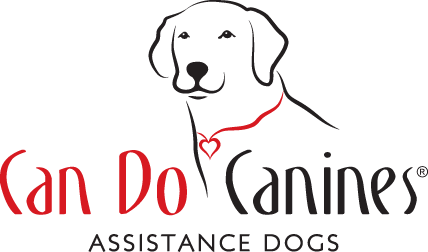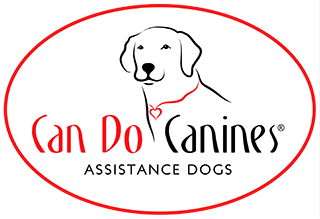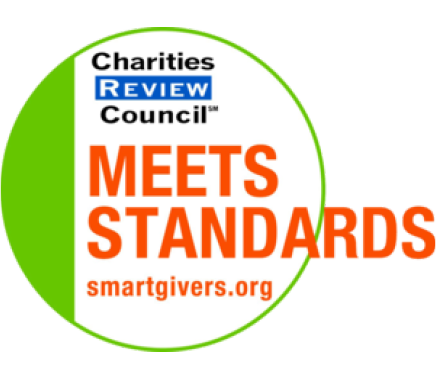The Basics
[Dog's Name] - The dog’s name equals eye contact and sustained attention. Not a recall, but the dog may move towards the handler.
Come - The dog recalls quickly to the front, within touch distance of the handler.
Get Busy - The dog’s cue to eliminate.
Get Dressed - The dog will move their nose into their collar, cape and other equipment and stay still while they are fastened.
Sit - From a stand, the dog tucks their back feet in to meet their front feet; front feet do not move. From a down, the dog’s shoulders rise up and their back feet move to meet their front feet; the front feet do not move. Stay implied; requires release or next cue.
Down - From stand, the dog folds back into a down; the front feet do not move and the dog does not sit first. From a sit, the dog collapses downwards; the dog's front feet do not move. Stay implied; requires release or next cue.
Stand - From a down, the dog rises up and forward and kicks back feet out. From a sit, the dog kicks their rear feet backwards. Front feet do not move in either case. A pop-up stand is acceptable when the dog’s front feet leave the ground, though they retain original placement upon landing. Stay implied; requires release or next cue.
Stay - Built into many cues, may also be used as a standalone verbal. Dog does not move from position. Requires release or next cue.
Wait - Verbal cue for dog to pause their motion until they receive release or next cue.
Okay - Release cue from a duration position. The dog should move out of the position with focus on the handler.
Up - The dog jumps onto a surface (such as furniture or into a car) with all four feet.
Off - The dog puts all four feet onto the ground (cue to remind the dog not to jump up or to release from a table).
Kennel - The dog should enter their crate, willingly, and wait until they are released.
Yes - Reward marker. This word captures a behavior and indicates the reward comes from the hand.
Positioning & Walking
Let’s Go - This signals the dog to begin moving with the handler.
Heel and Side - The dog pivots to left (heel) and right (side) on verbal only; dog learns to never cross behind handler and to remain in the parallel position. Not a cue to begin or maintain walking.
Back - The dog moves backwards in a straight line. Can move backwards next to handler (in the same direction) and also away from handler independently in any direction.
Fix it - If the leash becomes tangled between the dog’s feet, the dog will lift the trapped leg and step over the leash in order to remove the tangle. The dog does not need the handler to move the leash.
Under - The dog sends beneath an object such as a table or chair and lays down. The handler does not need to lure or assist the dog in orienting under the object and the dog is able to navigate short, tight spaces. The handler may be sitting or standing when cuing the dog. Stay implied; requires release or next cue.
Park - While the handler is seated, the dog will come to the front zone, circle to face the same direction as the handler, lay down, and back underneath the handler’s seat. Stay implied; requires release or next cue.
Step - The dog places front feet onto an elevated surface such as a curb or stair.
Out - The dog will move out of predefined space, such as a bathroom or kitchen and wait to re-enter until released.
Other Cues
Chin - The dog rests their chin in the handler’s palm. This cue implies duration; the handler should be able to examine the dog’s teeth, ears and eyes.
Nudge - The dog pushes their nose firmly into the palm of a hand. Nudge as a verbal is only used on the body (hand, or leg).
Settle - The dog will lay down, flip onto a hip and rest on their side (lateral recumbent), with their head and shoulder lying on the ground. The dog should allow an exam, grooming and petting while in this position. Stay implied; requires release or next cue.
Go Mat - The dog sends to a stationary target on verbal only and lays down on the target. Stay implied; requires release or next cue.
Shake - The dog will place a front paw into the palm of their handler. The dog should know how to give both front feet to a handler, and be comfortable having each foot gripped or moved. This behavior may be used for occasional greetings in public, as well as general care.
Visit - The dog rests their chin on surface such as a chair or the handler’s leg. When visiting the handler, dog only approaches from the sides, never the front. This cue implies duration; the handler should be able to pet the dog, attach the leash or clip the collar, etc. while they rest their chin.




